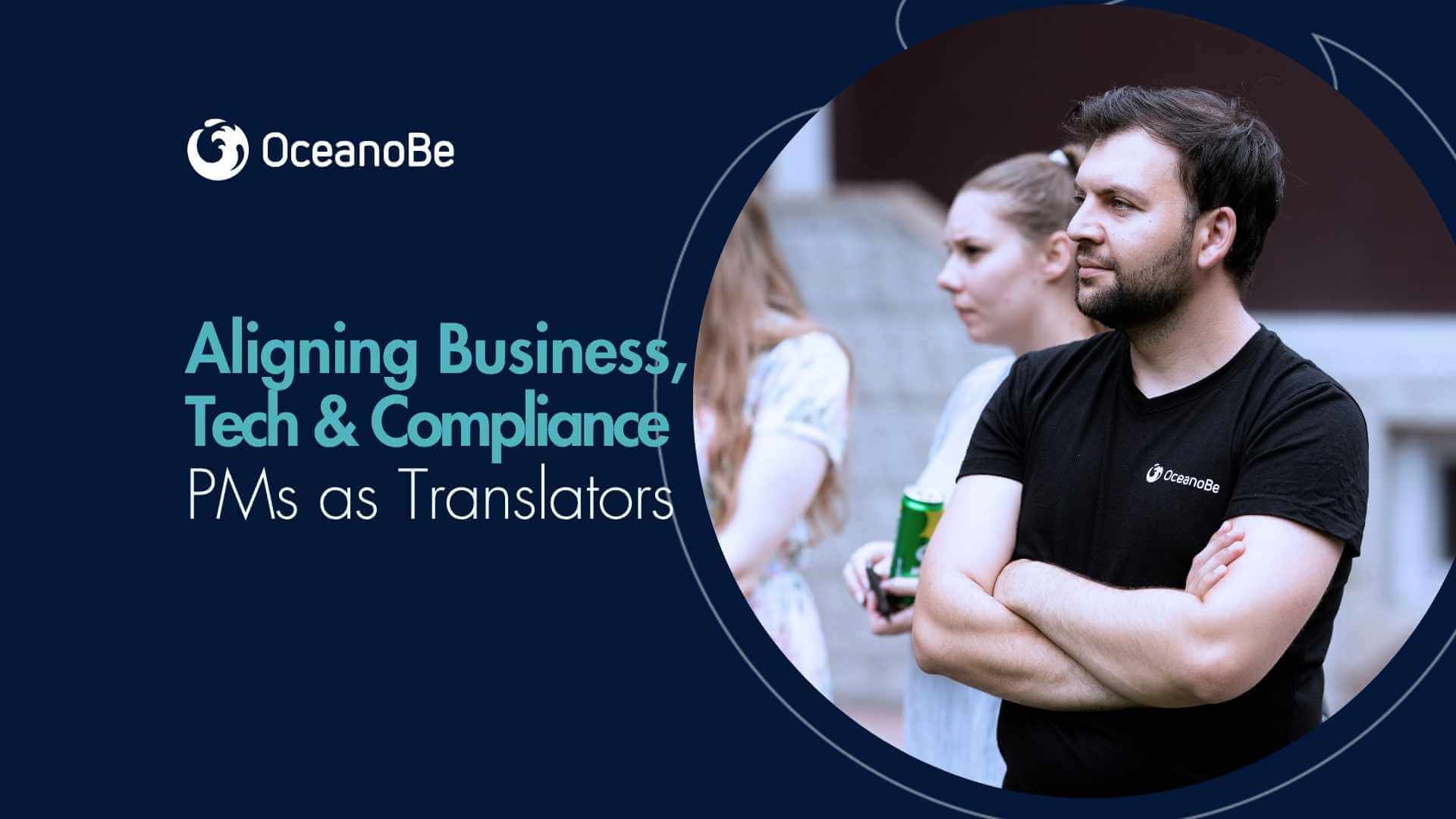Aligning Business, Tech & Compliance
PMs as Translators in Regulated Environments
PMs as Translators in Regulated Environments

In banking and fintech, product innovation doesn't happen in a vacuum—it happens under regulation. Every new feature, interface, or API rollout must meet the standards not only of user experience and engineering excellence but also of legal and compliance scrutiny. In this high-stakes environment, Product Managers (PMs) play a critical role—not just as roadmap owners, but as translators between business objectives, technical feasibility, and regulatory obligations.
Let’s explore how PMs act as cross-functional enablers in regulated industries—and how to do this effectively.
Modern fintech product teams often find themselves at the intersection of:
These three forces don’t always speak the same language. What’s "quick to market" for business might be "non-compliant" for legal and "unscalable" for engineering. The PM is the person who must translate priorities across these domains and ensure that the resulting product vision is cohesive, realistic, and safe.
In regulated environments, compliance isn’t a checkbox—it’s a continuous negotiation. PMs must interpret legal language like PSD3, GDPR, PCI DSS, or AML directives into practical implementation requirements:
What fields need to be masked or encrypted?
What onboarding steps require KYC (Know Your Customer) validation?
What does “right to be forgotten” mean in terms of API and data retention?
It’s not enough to document requirements. PMs need to work with legal and compliance teams to map out edge cases, audit workflows, and traceability needs, then collaborate with engineers to build them in without compromising on usability or speed.
Enabling Tech Teams with the Right Context
Product teams often ask engineering to "just build it," but in banking, engineers need more than specs—they need risk awareness. What happens if a transaction fails? What’s the fallback if a partner API returns 500? Are we allowed to retry, or do we have to notify the regulator?
PMs must provide context to help tech teams make architecture and implementation decisions that are not only technically sound but also regulator-ready.
This often means:
Facilitating reviews between security/compliance and tech leads
Aligning error-handling strategies with SLA and regulatory tolerance
Flagging hidden risks in user journeys (e.g. partial onboarding, multi-factor authentication flows)
Not all backlog items are equal. In regulated domains, prioritization is as much about compliance deadlines as user features. PMs must balance:
This requires product managers to work as risk managers, constantly assessing what’s urgent, what’s required, and what’s possible in the current release cycle.
One of the most overlooked roles of PMs in fintech is that of relationship manager. Engineers may feel slowed down by compliance constraints. Legal teams may distrust agile processes. Business owners may grow impatient with the pace of secure development.
PMs can bring alignment by:
Educating each function on the needs and pressures of the others
Creating shared documentation that explains business rules, assumptions, and trade-offs
Hosting regular syncs where compliance, tech, and business can voice blockers and dependencies
Trust is built when people feel heard and included in the decision-making process—even when compromises are needed.
Some best practices we’ve seen in successful fintech teams:
Call out data handling, encryption, or KYC dependencies inline with feature descriptions.
Don't bring legal in post-facto—get them involved early.
Use ticketing and versioning systems to track what legal requirement triggered what change.
Release readiness checklists: Include compliance checkpoints, like consent logs or audit trails, as part of the release gating process.
Being a PM in fintech means mastering ambiguity, context-switching between legal docs and API docs, and making trade-offs without losing sight of safety and speed. It means translating "we can’t do this" into "here’s what’s needed to do this safely." And it means becoming the connective tissue of trust in an industry where mistakes are costly.
The best product managers in fintech don’t just ship features—they ship secure, compliant, resilient experiences that can scale under scrutiny.